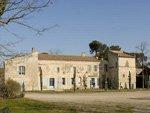Between rice fields and reed beds on the Pont de Rousty trail

Arles
Between rice fields and reed beds on the Pont de Rousty trail
Easy
2h
5,3km
+5m
-5m
Boucle
Embed this item to access it offline
From the Camargue Museum, stroll along the pleasant path of the Pont de Rousty. The major asset of this trail : to travel, in a short time, various natural environments of Camargue related to the freshwater inputs of the Rhone ! The route is punctuated with points of interest : rice fields in the marshes, bulls in the guardian hut, herons in the ducks. So open your eyes, listen to the singing of birds, smell the singular plants of Camargue and enjoy this amazing natural site !
12 points of interest
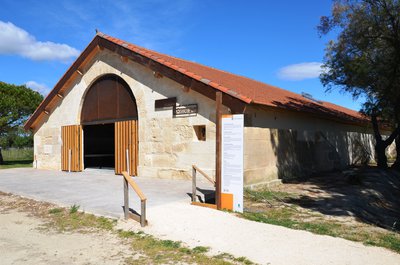
Musée de la Camargue - ©Marjorie Mercier - PNR Camargue  Patrimony and history
Patrimony and historyCamargue Museum
Located in the old sheepfold of the Pont de Rousty farmhouse under its original frame, the Camargue Museum presents its exhibition "The thread of water, the thread of time in the Camargue" retracing the life of the territory and its inhabitants. Playful and interactive, this retrospective is accessible to all. It is a real museum of society. At the entrance, visitors are invited to admire the "Horizons" work by Tadashi Kawamata, a wooden observatory that offers a view of the agricultural landscapes.
« Horizons », Tadashi Kawamata - ©Marjorie Mercier - PNR Camargue  Patrimony and history
Patrimony and history"Horizons", Tadashi Kawamata
Tadashi Kawamata, Japanese artist, is at the origin of the work "Horizons". In the form of a promontory, his work invites to rise to meditate on the stakes of the water in the Rhone delta. Inaugurated in 2013, this work is the result of a commission of the program "Marseille-Provence 2013, European Capital of Culture" entrusted to Tadashi Kawamata who worked with students in art, architecture and landscape. Horizons is part of the project "The water trails".
Canal de Rousty - ©Juliette Primpier - PNR Camargue  Water and rivers
Water and riversThe Rousty Canal
Created in 1543, this drainage channel drains the flow of rice fields and marshes. The water is evacuated by pumping in direction to the small Rhône at Albaron station or to the Great Rhône by the Grand Mar sewer. The water used to irrigate the land comes from the pumping station connected to the Rhone by the Triquette canal built in 1627. A siphon allows him to pass under the Rousty canal to browse and irrigate the land through a water carrier.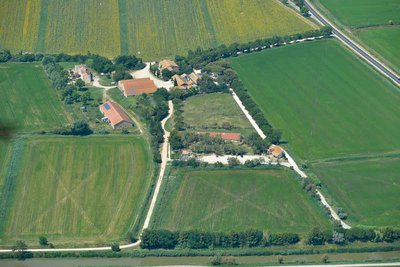
Domaine du Mas du Pont de Rousty - ©Opus Species - PNR Camargue  Flora
FloraThe agricultural domain of Rousty
The lands of the Pont de Rousty estate are spread around the farmhouse, consisting of farm buildings, houses and the administrative center of the Camargue Regional Natural Park. The cultivated plots are the closest to the mas located on the alluvial ridge of the old Rhône d'Albaron. Agricultural areas play an important role for biodiversity, especially rice fields as feeding grounds for birds (herons, ibis in summer, cranes in winter).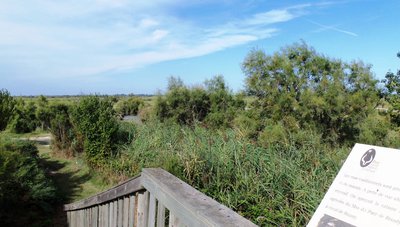
Allée d'arbres longeant le sentier du Pont de Rousty - ©PNR Camargue  Flora
FloraThe hedges
Along the Rousty Canal, a tree lane protects the walkers from the wind and the heat of the sun. It is composed of tamarisks, ash trees, pine nuts, elm trees, bohemian olive trees, black locust trees, dogwoods. The canes of Provence and the atriplex massifs form biological corridors and reservoirs of biodiversity. Bat chiroptera (bats) find their hunting areas in particular after dark.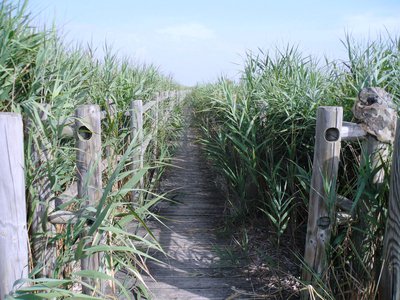
Roselière - ©Juliette Primpier - PNR Camargue  Fauna
FaunaReed beds
Reed beds are of interest for many animal species specific to this natural habitat. Invertebrates frequent the reed beds (insects, spiders) attracting predatory birds. In the spring, heritage species here find the ideal conditions for nesting: starry bittern, lusciniole with mustaches .. This site is also a refuge for a multitude of species during migratory stopovers or wintering periods (bluethroat, mustache).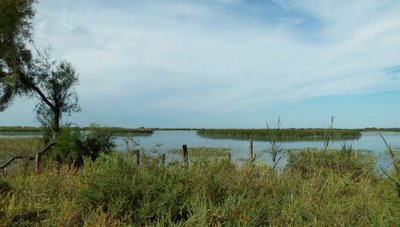
Marais doux - ©PNR Camargue  Water and rivers
Water and riversSweet and reed marshes
The "soft" marshes are characteristic of the upper Camargue, where the influence of salt is less marked. Consisting of a dense and high vegetation (reeds, cattails, bulrushes), they are a sanctuary for many birds (ducks, stilts ...), amphibians and reptiles. The reed beds, interspersed with open water, extend into these slightly brackish freshwater marshes. Habitat of waterfowl, some are cut in winter for harvesting the reed, which is used to cover the thatch roofs.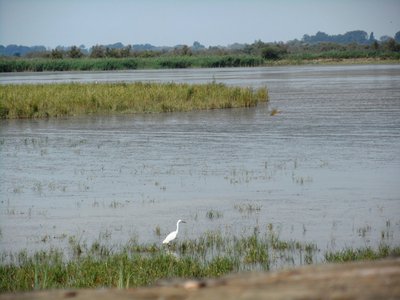
Oiseau du marais - ©Juliette Primpier - PNR Camargue  Fauna
FaunaThe marsh birds
The water levels of the marshes vary according to the seasons. From spring and summer, the edges of the marsh dry up under the effect of evaporation and form a silty beach. Migratory species such as waders here find resting and feeding areas. The edges of the marsh composed of shrub reeds are an ideal habitat for archeidae (purple heron ...). From the autumn, ducks are numerous and feed on aquatic grass beds.
Taureaux de Camargue - ©PNR Camargue  Elevage et pastoralisme
Elevage et pastoralismeThe pastures
The lowest and most remote lands form an arid landscape called enganes. The bull of Camargue, also called bull of Raço di Bioù and whose breeding is mainly intended for the Camarguaise race and the companion of the guardians, the Camargue horse, are not very demanding to feed themselves. Grazing land, bulls and horses are resistant to the harsh climate and are raised extensively labelled by a Protected Designation of Origin (AOP Taureau de Camargue).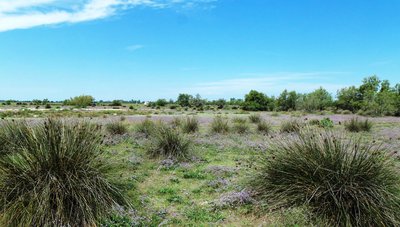
Sansouires - ©PNR Camargue  Flora
FloraThe sansouire
The sansouire is characterized by the high salt content of a non-irrigated soil whose silt is bleached by the rise of salt. Only halophilic plants resist: salicornia, saladella, Obione and soda. The combustion of soda produces crystals formerly used for the manufacture of Marseille soaps or in the manufacture of glass. From the 13th to the 19th century, this plant is harvested and marketed by Camarguais, then it is replaced by chemical soda.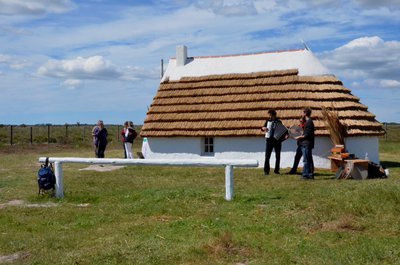
Marjorie Mercier - PNR Camargue  Savoir-faire
Savoir-faireThe Gardian hut
Traditional home of the guardians, this cabin was built in the 1980s according to the techniques and with the traditional materials: the sagno (reed) for the roof and the walls, the elm and the tamarisk for the structure. Always established, north / south, the cabins turn their round back to the mistral, dominating wind from the north. An earthen embankment is maintained to the west of the hut in order to favor the installation of a colony of Eurasian Bees which digs its nests in the embankment.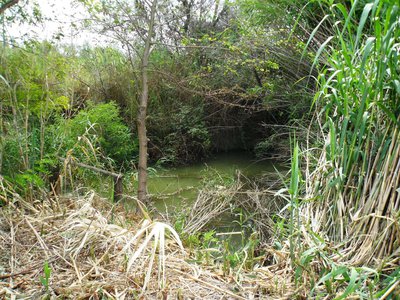
Roubine - ©Juliette Primpier - PNR Camargue  Water and rivers
Water and riversThe roubine
Roubine is a local term used to refer to an artificial water supply or drain channel, often connected to a pumping station. The roubines and the plants that border them form important biological corridors that house heritage species (the European Pond Turtle or the Butterfly Diana that can be seen in the spring). Roubines can be colonized by invasive species such as the Jussie, coming from America and the summer yellow flowering.
Description
With your back to the Camargue Museum, start the ride on the left. Walk along the Rousty canal for more than 1 km.
1 - Go to the right and continue for 600 m.
2 - at the intersection of the two paths, turn to the left.
3 - Turn left at the footbridge to discover the reed bed. Walk the bridge to the point of view and retrace your steps. In point 3, turn left to reach the observatory. Then retrace your steps and in point 2 continue straight.
4 - At the intersection of the two paths, follow the path on the right and then return to the Camargue Museum.
1 - Go to the right and continue for 600 m.
2 - at the intersection of the two paths, turn to the left.
3 - Turn left at the footbridge to discover the reed bed. Walk the bridge to the point of view and retrace your steps. In point 3, turn left to reach the observatory. Then retrace your steps and in point 2 continue straight.
4 - At the intersection of the two paths, follow the path on the right and then return to the Camargue Museum.
- Departure : Museum of the Camargue, Arles
- Arrival : Arles
- Towns crossed : Arles
Forecast
Altimetric profile
Recommandations
Good walking shoes, binoculars, drinking water and anti-mosquito are recommended.
Respect the surrounding animals.
Dogs are accepted only on a leash
Respect the surrounding animals.
Dogs are accepted only on a leash
Information desks
the Camargue museum
Mas du pont de rousty, 13200 Arles
Remember to visit the Camargue museum! It is located next to the administrative centre of the Camargue Nature Park.
OT Arles
9 Boulevard des Lices, 13200 Arles
Transport
Envia transport network : Line 20 > Arles/the Saintes-Maries-de-la-Mer (bikes racks) >> www.tout-envia.com; www.pacamobilite.fr
Access and parking
11 km south of Arles, by the D570.
Parking :
Parking Musée de Camargue, Arles
Report a problem or an error
If you have found an error on this page or if you have noticed any problems during your hike, please report them to us here:

